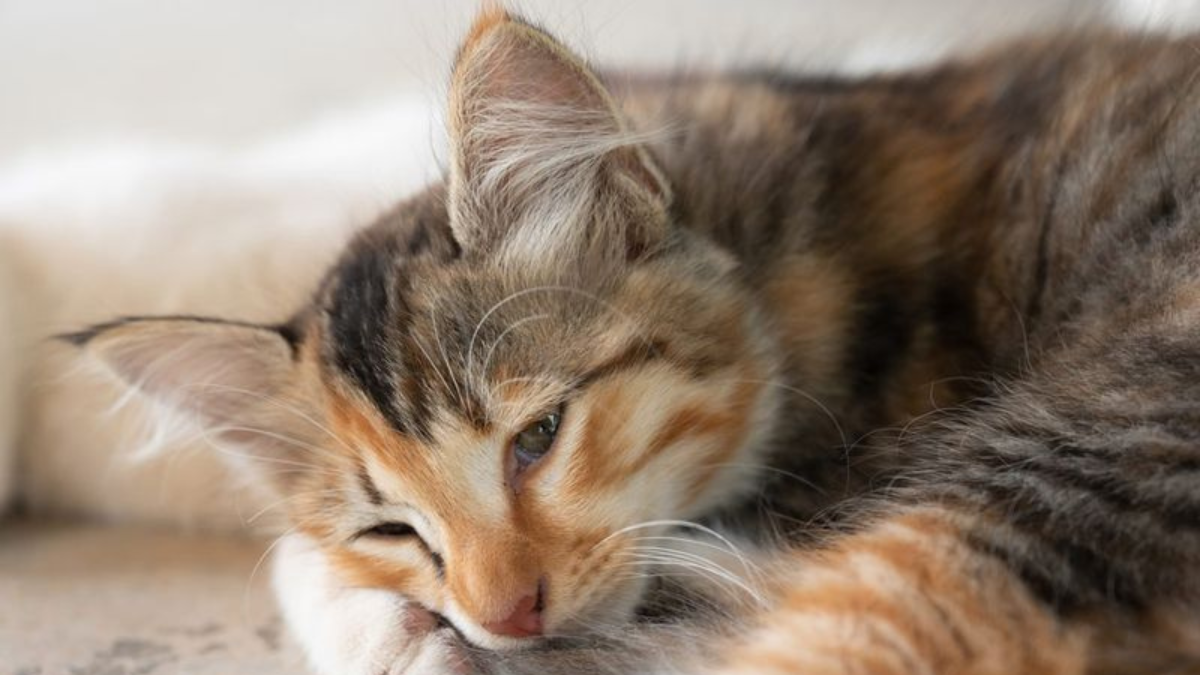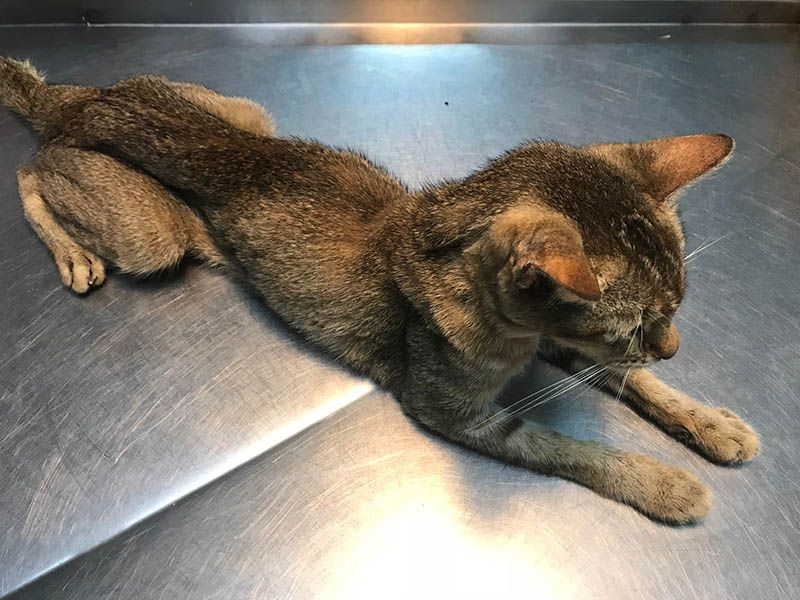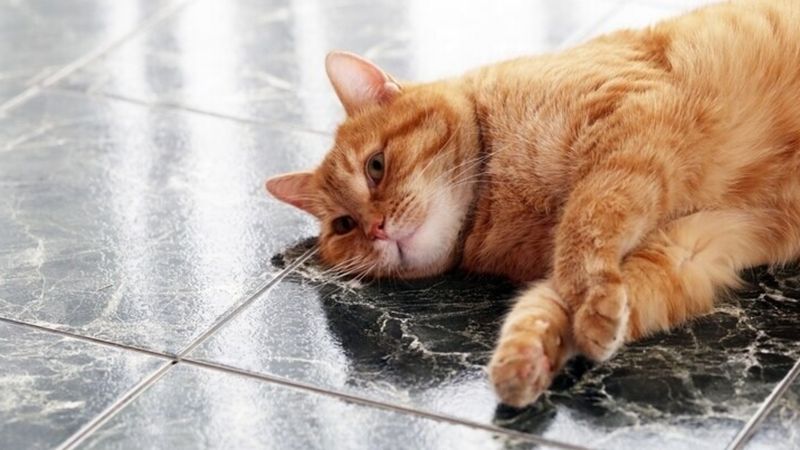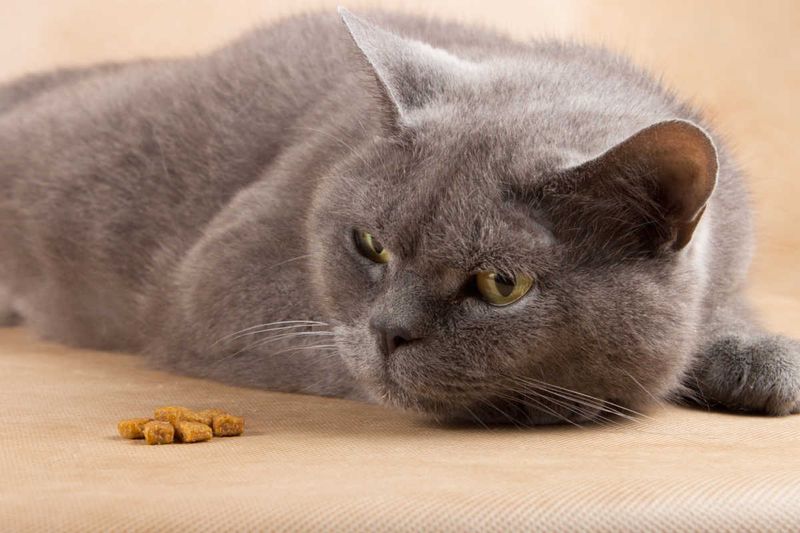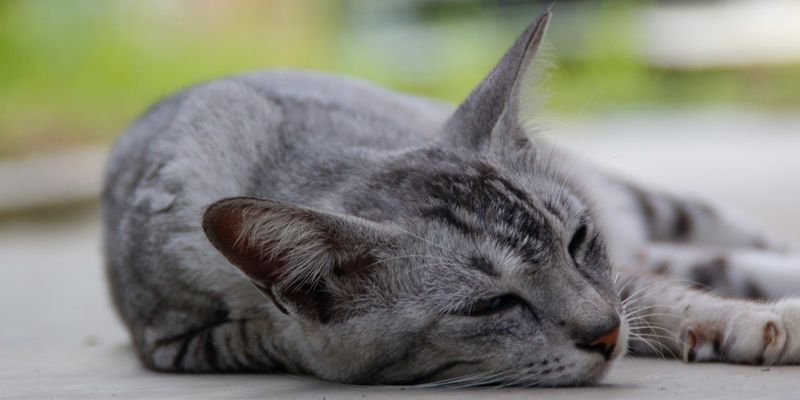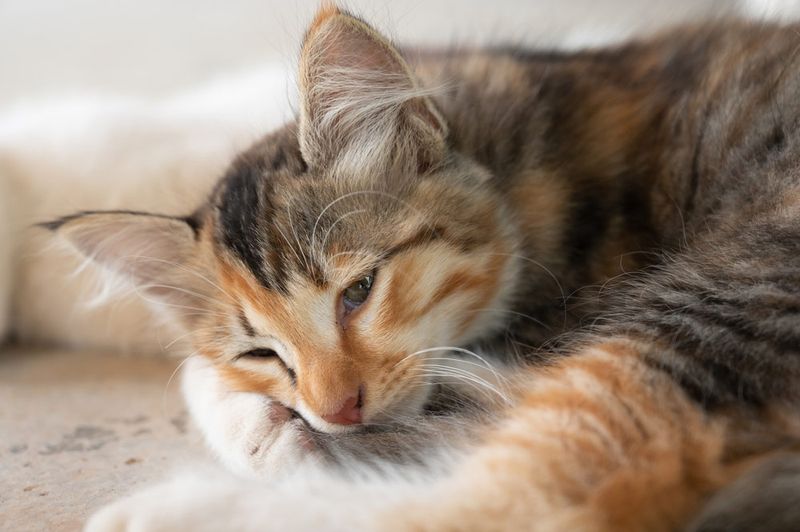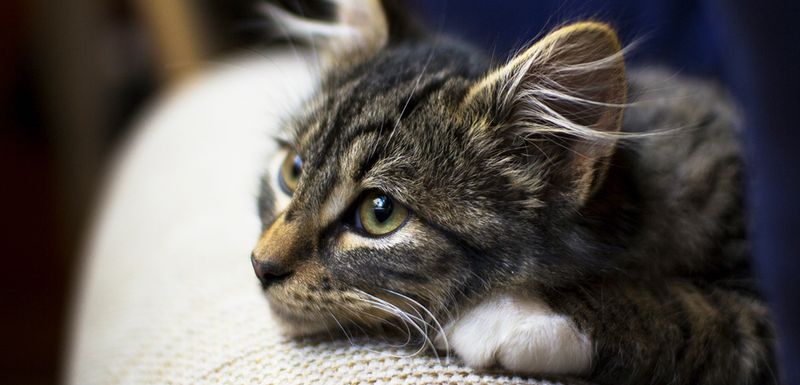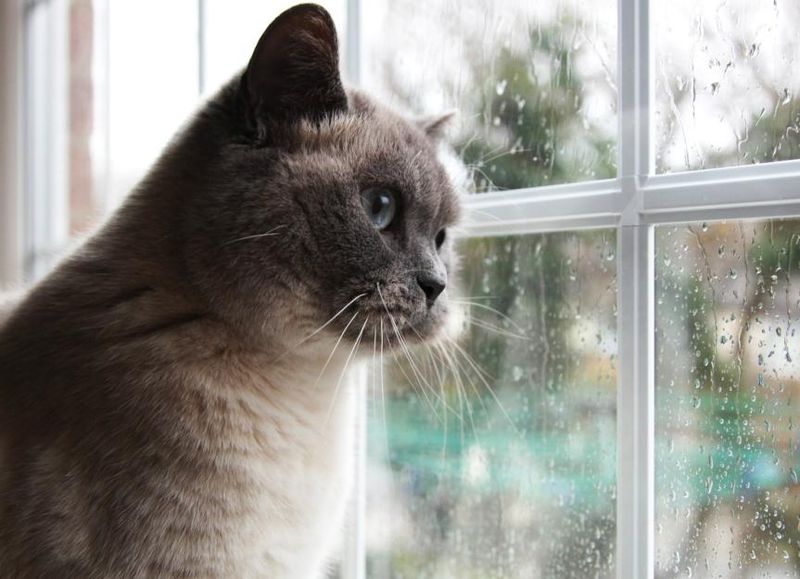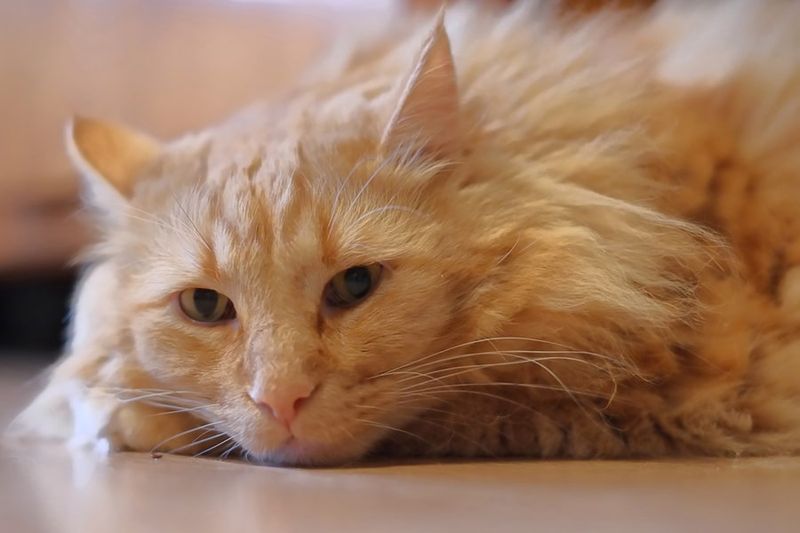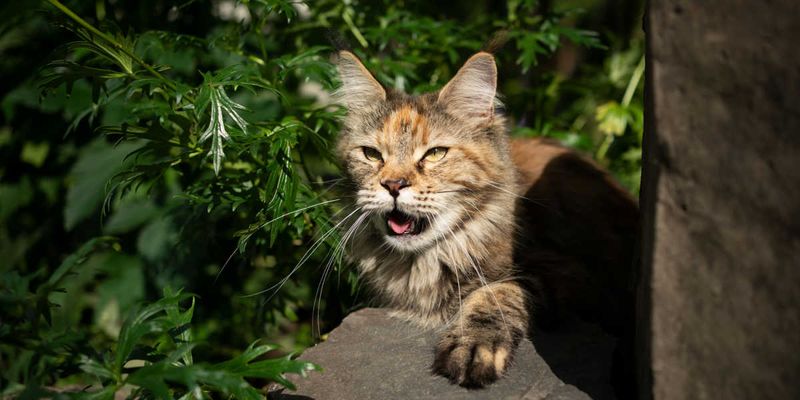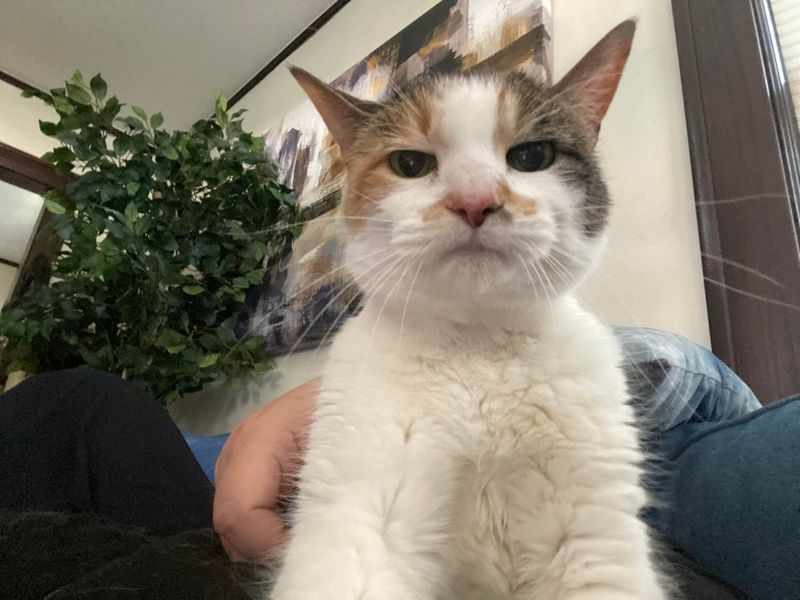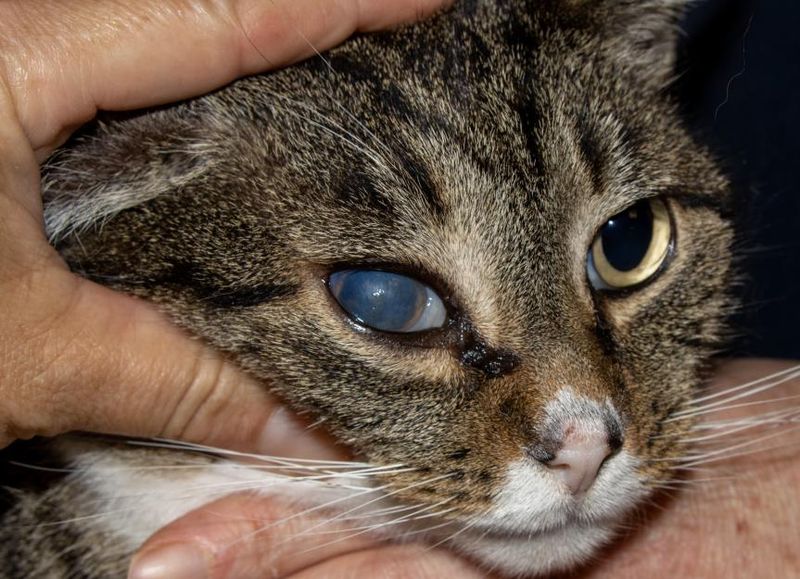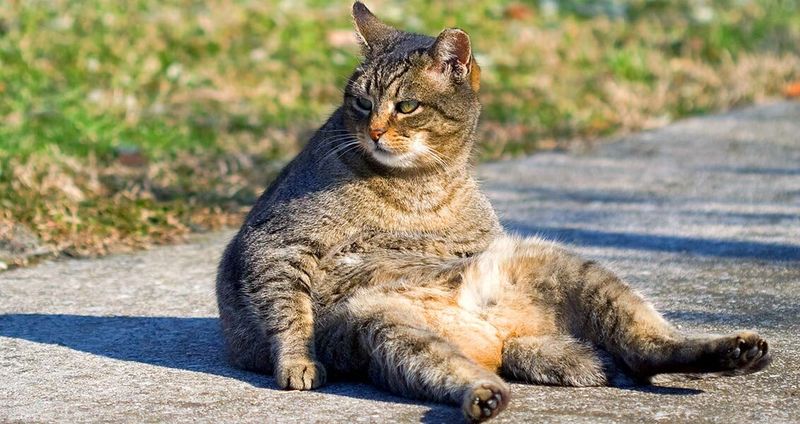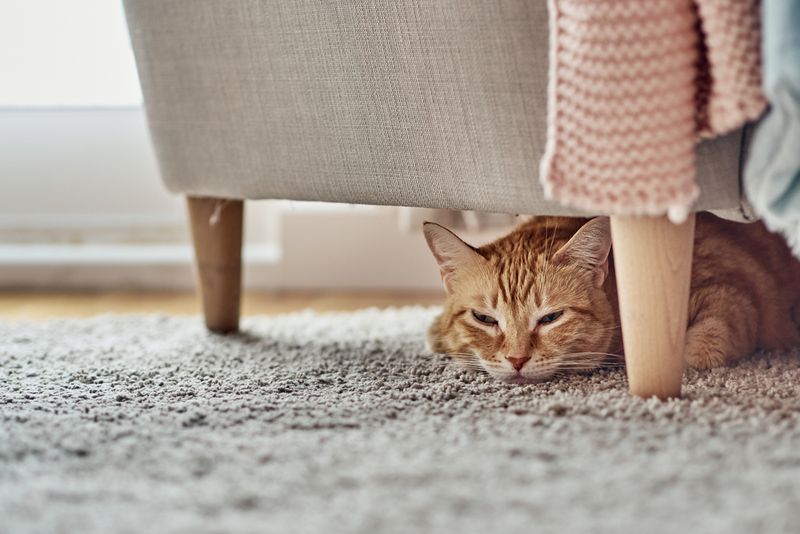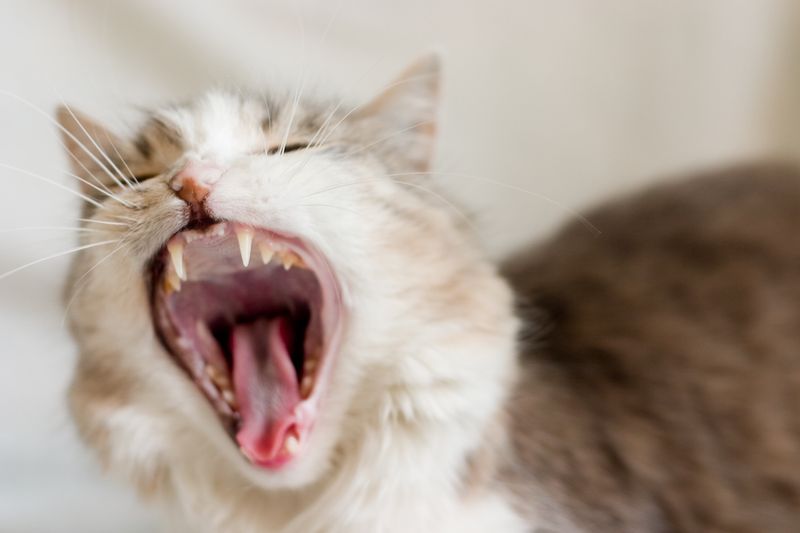📖 Table of Content:
- 1. Dramatic Weight Loss
- 2. Severe Dehydration
- 3. Refusing Food and Water
- 4. Extreme Lethargy and Weakness
- 5. Breathing Changes
- 6. Loss of Bladder and Bowel Control
- 7. Seeking Isolation or Unusual Clinginess
- 8. Decreased Grooming and Unkempt Appearance
- 9. Temperature Regulation Problems
- 10. Mental Confusion or Disorientation
- 11. Changes in Eye Appearance
- 12. Abnormal Posture or Movement
- 13. Decreased Response to Stimuli
- 14. Changes in Vocalization
Cats possess an extraordinary ability to conceal pain and illness, which often makes it difficult to detect when they are approaching the end of their lives. Subtle shifts in behavior and physical condition can serve as important clues to their well-being. Close observation is essential to identify these early signs.
As felines age, changes may become more pronounced, signaling a need for increased attention and care. Noticing these differences can help ensure that comfort and dignity are maintained during their final stages. Early recognition supports better management of their needs.
Awareness of the signs that indicate declining health empowers caregivers to make thoughtful decisions. It enables consideration of appropriate comfort measures and quality of life concerns. Timely consultation with a veterinarian becomes critical for guidance on end-of-life care.
1. Dramatic Weight Loss
Senior cats losing significant weight despite normal eating habits signals potential serious health issues. Their once-plump frame becomes bony, with visible spine and hip bones poking through their fur.
Many terminal feline conditions—kidney disease, cancer, or hyperthyroidism—cause rapid weight loss even when appetite seems unchanged. Your cat might look like they’re eating normally, but their body isn’t processing nutrients effectively.
Regular weighing can help track these changes. A loss of more than 10% of body weight in a short period warrants immediate veterinary attention, as this dramatic change often indicates your cat’s body is shutting down critical systems.
2. Severe Dehydration
In the last phase of life, cats frequently show dehydration signs that don’t respond to care—tacky gums replace moistness, and the skin over the scruff lacks normal elasticity when pinched.
Sunken eyes and a dull, matted coat further indicate fluid imbalance. Even cats who still drink water may not absorb enough moisture due to failing organ systems, particularly the kidneys.
Dehydration accelerates rapidly in the terminal stages. Offering wet food, water fountains, or even subcutaneous fluids under veterinary guidance might provide temporary relief, but persistent dehydration despite these measures often signals the body’s systems are winding down.
3. Refusing Food and Water
Food refusal represents one of the clearest indicators your cat may be transitioning toward their final days. A cat who previously enjoyed mealtime but now turns away from favorite treats signals a significant change.
This behavior often progresses gradually – first rejecting dry food, then wet food, and eventually even the most tempting offerings. Their body begins conserving energy for essential functions only.
Force-feeding rarely helps at this stage and may cause distress. Instead, focus on comfort. Offer small amounts of aromatic foods like warmed tuna or chicken broth, but understand that appetite loss is a natural part of the dying process as metabolism slows dramatically.
4. Extreme Lethargy and Weakness
A once-active cat who now spends nearly all day sleeping in unusual places may be showing end-of-life fatigue. This isn’t ordinary catnapping but profound exhaustion where even basic movements require visible effort.
Walking becomes wobbly or uncoordinated. Your cat might struggle with simple jumps they once made effortlessly or avoid climbing stairs altogether. They may collapse after minimal exertion.
This weakness often progresses until your cat stays in one spot for extended periods. While older cats naturally slow down, extreme lethargy, where they barely respond to stimuli like treats or toys represents a fundamental change in energy levels that often signals bodily systems beginning to shut down.
5. Breathing Changes
Altered breathing patterns often emerge as cats approach their final days. Normal feline respiration is nearly imperceptible, but dying cats may exhibit labored breathing with visible chest movements or open-mouth panting.
Unusual sounds accompany these changes – wheezing, crackling noises, or distinctive pauses between breaths called Cheyne-Stokes respiration. Some cats develop a characteristic “death rattle” – a gurgling sound from fluid buildup in the throat or lungs.
Breathing might alternate between extremely slow and suddenly rapid. These respiratory changes typically indicate significant heart or lung compromise. While some breathing issues require immediate veterinary care for comfort, when accompanied by other end-of-life signs, they often signal the body’s systems winding down.
6. Loss of Bladder and Bowel Control
Perfectly litter-trained cats may begin having accidents around the house as their health deteriorates. This incontinence isn’t behavioral but physical – their muscles controlling elimination weaken as vital systems fail.
You might notice urine leakage when they sleep or move, or find they’re unable to reach the litter box in time. Some cats stop using the litter box entirely as mobility decreases.
Bowel movements may become irregular – either constipation or diarrhea can occur. Providing absorbent bedding and gentle cleaning helps maintain dignity and comfort. This loss of function often indicates neurological decline or severe weakness that accompanies the final stages of life.
7. Seeking Isolation or Unusual Clinginess
As they near the end of life, many cats instinctively distance themselves from people, retreating to isolated hiding places like under the bed, in closets, or outside to feel secure when they’re most vulnerable.
Conversely, previously independent cats might suddenly become extraordinarily clingy, refusing to leave your side. This attachment stems from seeking comfort and security during a confusing time.
Both behaviors represent significant personality shifts worth noting. A typically social cat who now hides or a standoffish cat suddenly demanding constant contact often signals they’re experiencing fundamental changes. These behavioral shifts frequently intensify as cats move closer to their final days, reflecting their changing perception of safety and comfort.
8. Decreased Grooming and Unkempt Appearance
Cats are naturally fastidious groomers, spending hours daily maintaining their coats. When this self-care stops, it signals a serious decline. Their fur becomes matted, greasy, or clumped, especially around the hindquarters, where cleaning requires flexibility.
This neglect isn’t laziness but indicates they lack energy for non-essential activities or experience pain when attempting to groom. You might notice dandruff, a dull coat, or accumulated debris in their fur.
Offering gentle brushing provides comfort and bonding during this time. While elderly cats generally groom less, a complete cessation, particularly when combined with other symptoms on this list, often indicates your cat has entered a phase where their body conserves energy only for vital functions.
9. Temperature Regulation Problems
Failing to maintain normal body temperature often occurs as cats approach life’s end. Their extremities – ears, paws, and tail – may feel noticeably cool to the touch even in warm environments.
Many dying cats seek unusual heat sources like sunny windowsills, heating vents, or directly on radiators. Others might suddenly sleep in the refrigerator’s cooling draft despite previously avoiding cold areas.
This temperature dysregulation happens as circulation weakens and metabolism slows. Providing comfortable options – both warming beds and cooling mats – allows your cat to self-regulate as best they can. Extra blankets for burrowing or raised beds away from cold floors can significantly improve comfort during this challenging time.
10. Mental Confusion or Disorientation
Cognitive changes frequently accompany the end-of-life process in cats. Your previously oriented companion might seem confused about familiar surroundings, staring blankly at walls or getting stuck in corners.
Vocalizing at odd hours, particularly with loud, distressed meows unlike their normal communication, often indicates disorientation. Some cats forget litter box locations or seem unable to recognize family members.
This confusion results from decreased oxygen to the brain, metabolic changes, or neurological decline. Maintaining consistent routines and environments helps minimize stress. Speaking in gentle tones while approaching slowly prevents startling them during these confusing episodes. While some cognitive decline occurs with age, sudden or severe disorientation often signals more serious end-of-life progression.
11. Changes in Eye Appearance
The eyes truly reflect declining health in cats approaching life’s end. Their gaze often becomes fixed, vacant, or unfocused rather than alert and tracking movement. The pupils may remain dilated regardless of lighting conditions.
Physical changes occur too – sunken eyes from dehydration, cloudiness unrelated to normal aging, or a dull film over previously bright eyes. Some cats develop a characteristic “thousand-yard stare” where they seem to look through rather than at objects.
The third eyelid (nictitating membrane) may become partially visible, appearing as a whitish film across the inner corner. These eye changes often correlate with neurological decline or reduced blood circulation, signaling the body’s systems are beginning to shut down in preparation for natural death.
12. Abnormal Posture or Movement
Cats approaching death often adopt unusual postures that signal physical distress. They might sit hunched with head lowered and back arched, or lie with legs sprawled in uncomfortable-looking positions they wouldn’t normally choose.
Head pressing – pushing their head against walls or furniture – indicates serious neurological issues. Some cats circle repeatedly or pace restlessly despite physical weakness.
Movement becomes increasingly difficult. Your cat might drag limbs, show partial paralysis, or experience seizures in the final stages. These posture and mobility changes reflect neurological decline, pain, or organ failure. While some movement issues warrant pain management, when combined with multiple end-of-life signs, they often indicate your cat’s body is progressively shutting down essential functions.
13. Decreased Response to Stimuli
Fading interest in previously engaging activities signals your cat may be transitioning toward life’s end. The jingle of treat bags or favorite toys that once caused excitement now barely register.
Physical touch responses diminish too. Cats who loved ear scratches might seem indifferent to affection, or conversely, cats who disliked handling might suddenly tolerate it without reaction. This decreased responsiveness extends to environmental stimuli – doorbells, other pets, or loud noises may no longer trigger typical reactions.
This withdrawal isn’t emotional but physiological as senses dull and energy reserves diminish. While providing gentle interaction remains important, understanding this natural detachment helps caregivers accept the gradual goodbye process rather than interpreting it as rejection.
14. Changes in Vocalization
Vocal patterns often transform dramatically as cats approach their final days. A previously quiet cat might vocalize excessively with yowls, unlike their normal meows, particularly at night or when alone.
Conversely, talkative cats sometimes fall completely silent. The quality of vocalizations changes too – becoming hoarse, weak, or unusually high-pitched. Some cats make distinctive moaning sounds indicating discomfort.
These vocal changes reflect physical discomfort, cognitive changes, or sensory disorientation. While some medications can help manage pain-related vocalizing, understanding these sounds as communication attempts helps owners respond appropriately with comfort measures. Recording these vocalizations can help veterinarians assess pain levels and quality of life during this sensitive transition period.
